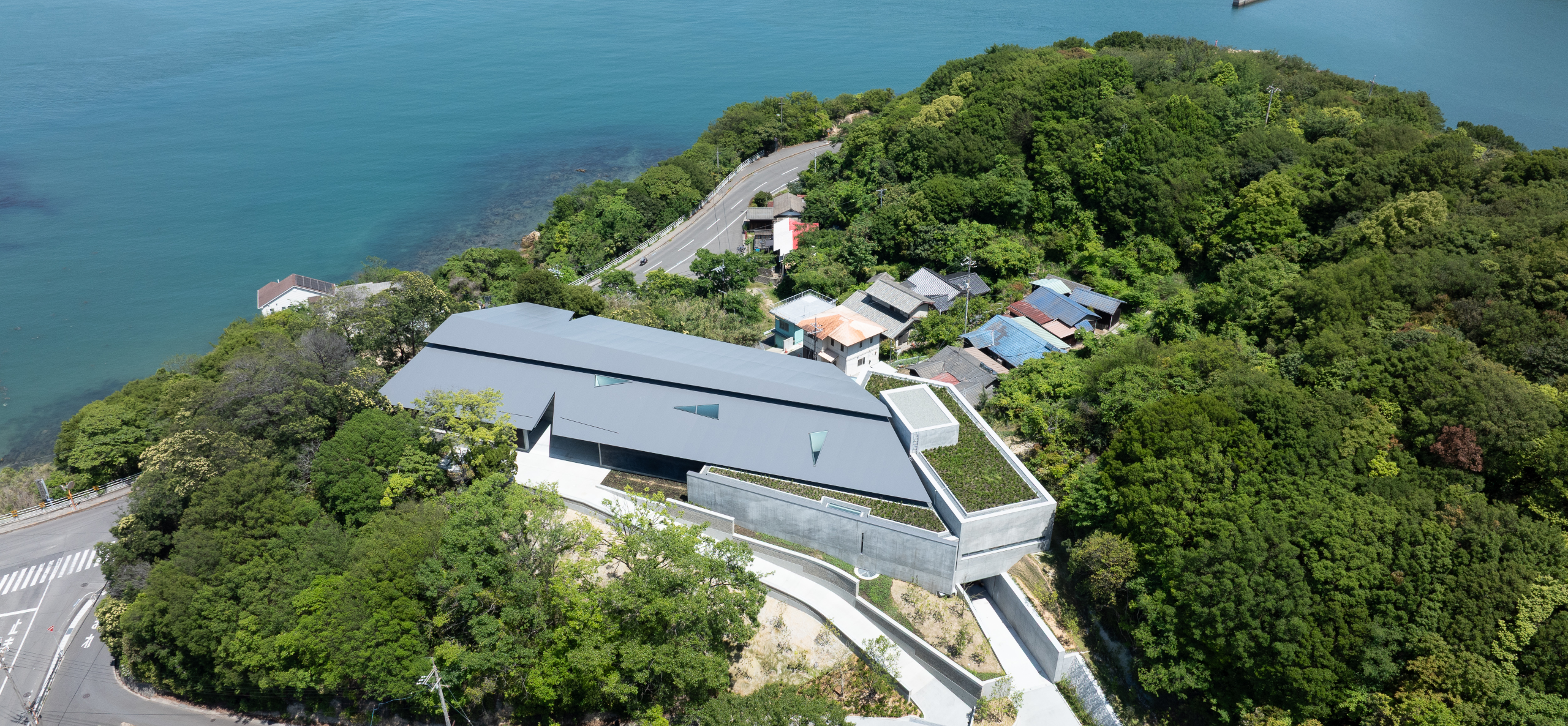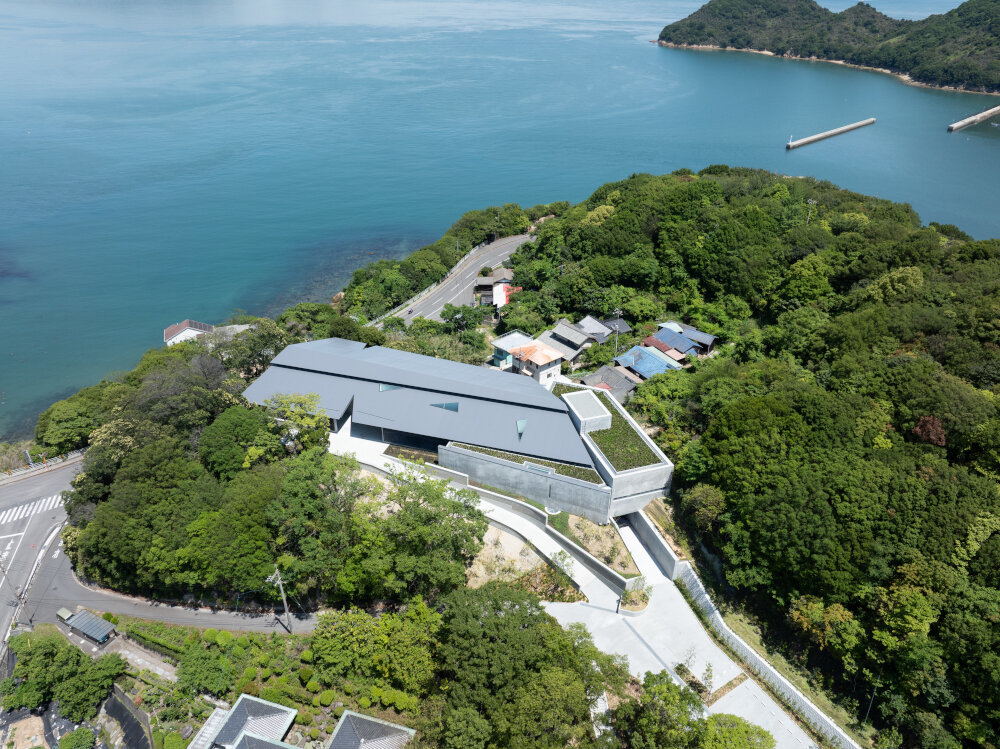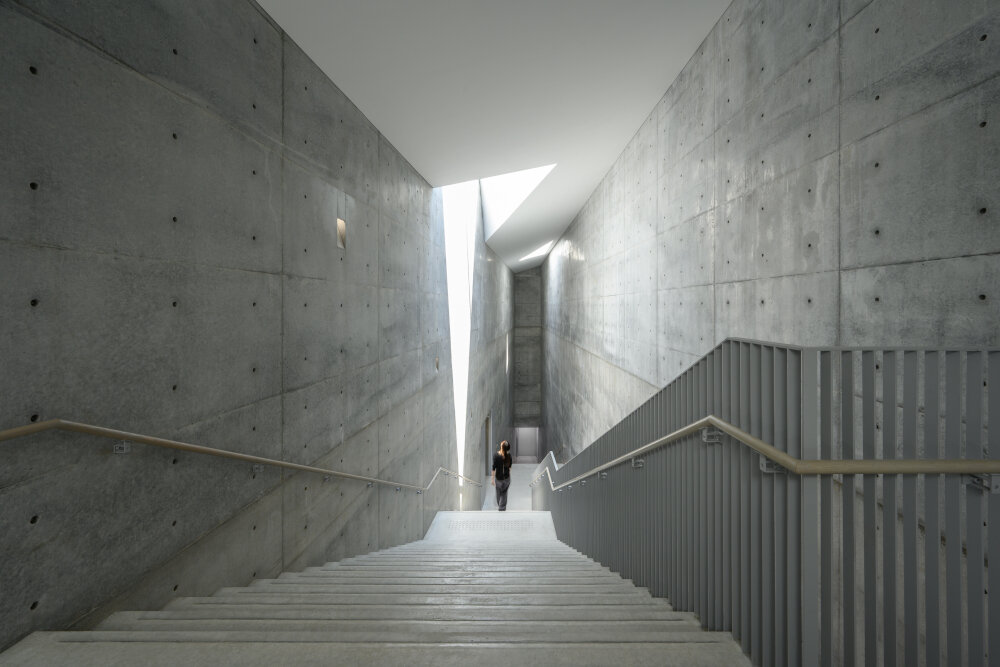Naoshima New Museum of Art
Naoshima New Museum of Art opened in spring 2025 on a hilltop near the Honmura district.
The new museum is designed by Tadao Ando, and it is his tenth architectural work among the art facilities of Benesse Art Site Naoshima. In a three-storied structure that houses two basement floors and a ground floor, the museum will exhibit and build a collection of major works and commissioned works of artists from the Asian region including Japan.
The museum will present special exhibitions and conduct various public programs such as talks and workshops with an aim to communicate diverse perspectives, expressions, and multilayered messages about contemporary society. The museum is also expected to function as a place where people visit time after time and encourage a multitude of diverse exchanges and connections with people from both on and off the island.
As the new museum interconnects with the existing art facilities on the island, this constellation of venues will offer more integrated art encounters, deeply resonant with the surrounding nature and communities. As the first museum to bear the name of Naoshima, it aims to further explore what it means to be a museum profoundly connected to the spirit of the local community, creating an even greater harmony between art, architecture, nature, and daily life on the island.
Information
- Hours:
- 10:00 a.m.-4:30 p.m.
(Last admittance: 4:00 p.m.)
- Closed:
- Mondays
*Open on Mondays for national holidays but closed the next day.
Open Days Calendar
- Admission:
- Online Purchase: JPY1,500; On-site Purchase: JPY1,700
*free for children 15 and under
- Director:
- Miki Akiko


Exhibition
Inagural Exhibition
The museum will feature both permanent exhibits and those that change periodically at a gradual rate. Unlike previous facilities at Benesse Art Site Naoshima, which focus more on permanent exhibitions, this approach aims to create dynamic yet unhurried artistic engagement, offering visitors something new with each visit.
The 2025 exhibition, celebrating the opening year, will feature large-scale installations of new and iconic works specificaly as site-specific for this location by 12 prominent and emerging artists (or groups) from across Asia, including Japan, China, Korea, Indonesia, Thailand, and the Philippines. The works will be displayed throughout the building's four gallery spaces, spanning approximately 1,500 square meters across two basement floors and one ground floor, as well as the café area and outdoor spaces.
Inaugural Exhibition - From the Origin to the Future
Opening:May 31, 2025
Artists (alphabetical order by their last/ family names)
- - Aida Makoto: Born in Niigata Prefecture, Japan in 1965. Based in Tokyo.
- - Martha Atienza: Born in Manila in 1981. Based in Bantayan Island, Philippines.
- - Cai Guo-Qiang: Born in Quánzhōushì, China in 1957. Based in New York.
- - Chim↑Pom from Smappa!Group: Founded in Tokyo in 2005. Based in Tokyo.
- - Heri Dono: Born in Jakarta, in 1960. Based in Yogyakarta, Indonesia.
- - indieguerillas: Founded in Yogyakarta in 1999. Based in Yogyakarta.
- - Takashi Murakami: Born in Tokyo in 1962.
- - N. S. Harsha: Born in Mysuru, India, in 1969. Based in Mysuru.
- - Sanitas Pradittasnee: Born in Bangkok in 1980. Based in Bangkok.
- - Shitamichi Motoyuki + Jeffrey Lim: Born in Okayama, Japan, in 1978. Based in Naoshima, Kagawa, Japan. Born in Kuala Lumpur, Malaysia, in 1978. Based in Kuala Lumpur.
- - Do Ho Suh: Born in Seoul in 1962. Based in London.
- - Pannaphan Yodmanee: Born in Nakhon Sri Thammarat, Thailand, in 1988. Based in Bangkok.
Architect
Architect Tadao Ando
Tadao Ando's 10th Architectural Work for Benesse Art Site Naoshima
The architecture of the Naoshima New Museum of Art is designed by Tadao Ando, who has worked on museum projects for Naoshima for over three decades beginning with Benesse House Museum, which opened in 1992. Featuring a large roof whose slope resonates with the hilltop location, the new three-story museum has two floors underground and one on ground level. A staircase room, where natural light enters from a skylight, extends downward, straight from the ground level to the underground floors. Located on both sides of the staircase are four galleries. There is a café on the northern part of the ground floor, which
offers a scenic view of the island of Teshima and fishing boats coming and going, a characteristic
vista of the Seto Inland Sea.
The exterior of the museum features black plaster reminiscent of burned cedar walls, and a stacked pebble fence to blend with the surrounding landscape of the Honmura area. The architecture and the approach leading up to the entrance are designed to connect the experience of visitors with Naoshima's history and people's lives.

Tadao Ando
Born in Osaka in 1941. A self-taught architect who founded Tadao Ando Architects & Associates in 1969. Recipient of many notable awards including the Architectural Institute of Japan Prize for "Row House in Sumiyoshi" (1979), the Gold Medal of UIA (2005), the Pritzker Architecture Prize (1995), John F. Kennedy Center Gold Medal in the Arts (2010), Shimpei Goto Award (2010), Order of Culture (Japan, 2010), Order of Art and Letters (France, 2013), Grand Officer of the Order of Merit (Italy, 2015), Isamu Noguchi Award (2016), Légion d'honneur Commandeur (2021). Professor of the University of Tokyo since 1997, currently honorary professor.

